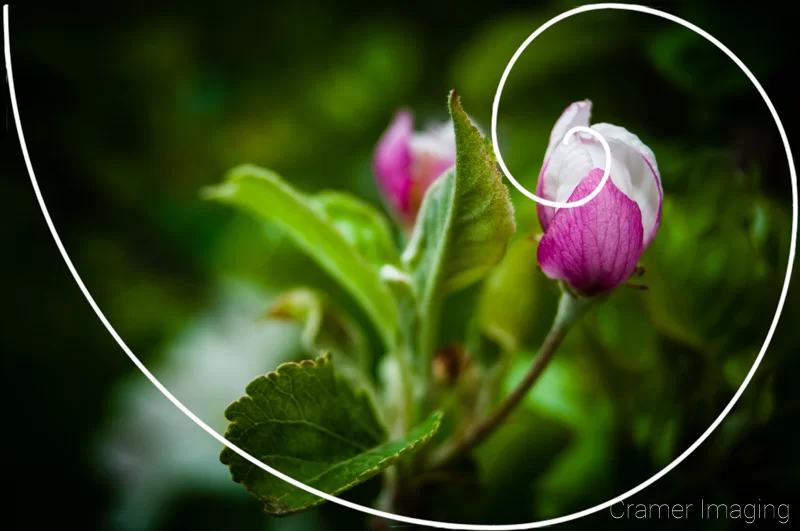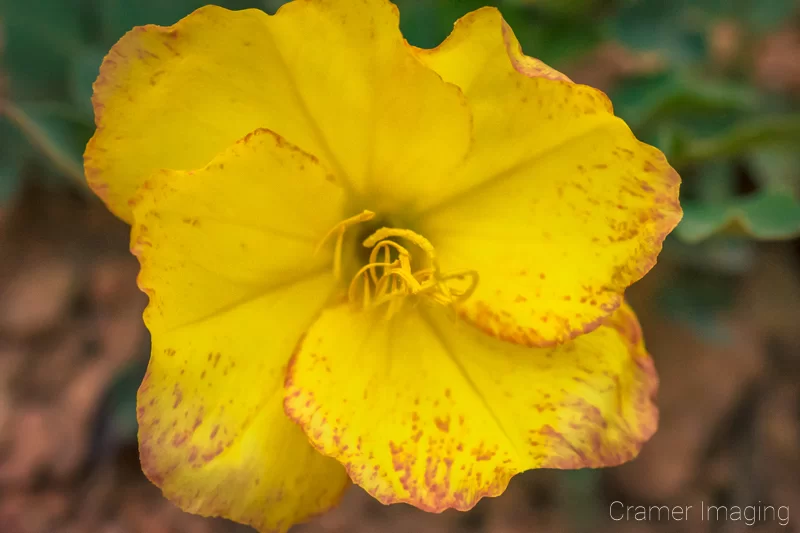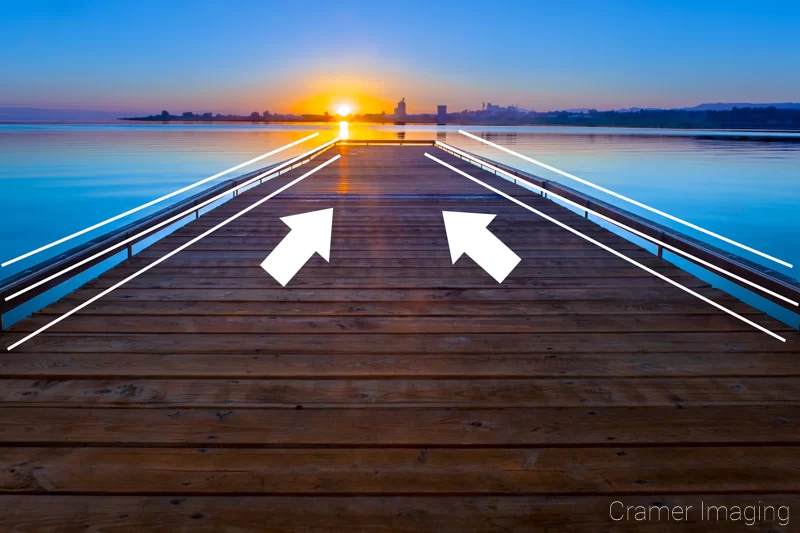If you’re new around here, you may think I only post landscape photos from my portfolio and stories/anecdotes about them, but I want to make sure you get massive value from hanging out in this corner of the Internet! So that’s why today I’m sharing 5 photography composition techniques to help you create your dream portfolio! Ready? Here we go!
1. Rule of Thirds
This is perhaps the most common and easily mastered composition technique.

Firstly, you must envision your viewfinder/phone screen as being divided into 9 equal squares/rectangles. To do this, you simply divide the length and also the width into thirds. Now, see if you can line up things like the horizon or an interesting subject in your photo onto those lines. Even better, can you place important elements where those lines cross? That’s rule of thirds in action.
2. Golden Mean
Envision the snail shell spiral overlaid on your subject matter.

This technique works better with more organically shaped subjects which will bend and curve. Start this technique by trying imagining that spiral overlaid on your phone or viewfinder and try to line photo elements up with the spiral. Keep in mind that the spiral can be rotated both horizontally and vertically.
3. Simplicity
Making your subject the central focus of the photo.

You know those photos which feature a subject with either a blurry or plain background? You can see exactly what’s important in the photo without much effort. So, try minimizing the background to a non-distracting color or taking a photo with a wide aperture (the lower the number, the wider the aperture). Your subject should pop out of the background with bokeh.
4. Framing
Creating a frame within a frame in your photo.
To use this technique, you’ll firstly want to find a window or some other means to create a frame in your picture. Perhaps your framing is a tree coming down from above. Shoot the subject in such a way that you see the frame as a part of the photo itself. Also, consider that these frames can be complete frames or partial frames.
5. Leading Lines
Lines in the picture which keep you looking deeper into the picture rather than leaving the picture.

This is often a more advanced technique but need not be. Start looking for edges and lines around you and follow where they go with your eyes. Do they all (or enough of them) seem to point to the same general place? Instead of ignoring those lines, try making that location and those lines/edges an element of your photo.
So, there you have it! Those are 5 different photography composition techniques. Which one of these will you try first? Let me know below!




